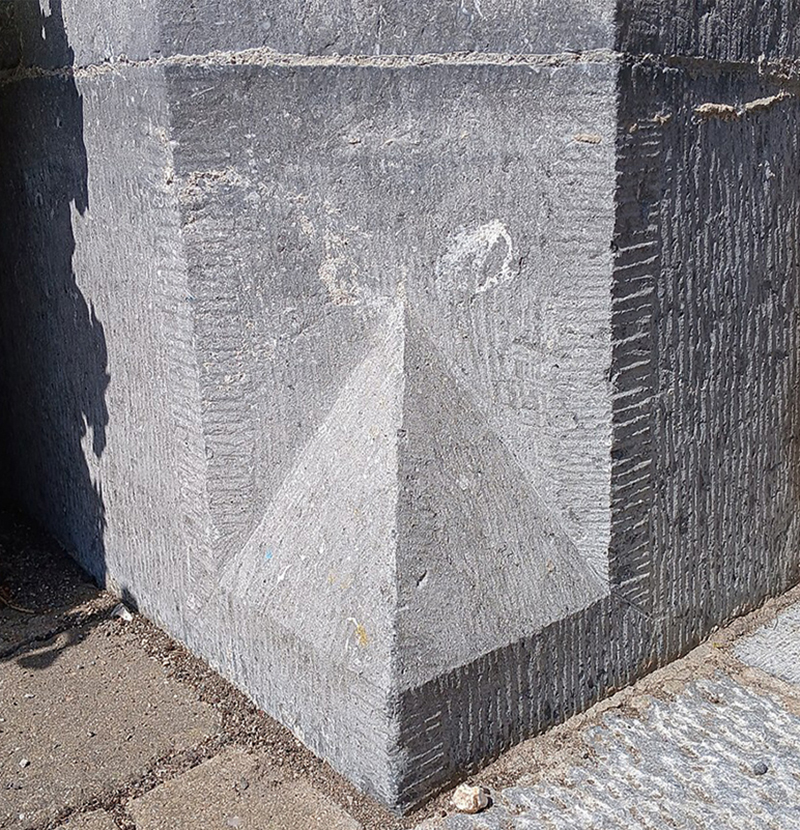Mask of Vaikuntha Vishnu, late 5th century. Learn more about 5th century masks
Designed by 

A slope or bevel, typically at 45º, at the intersection between planes in woodwork, architectural and engineering detailing, and other forms of material design, used for both functional and aesthetic purposes. In carpentry and furniture-making chamfers remove sharp edges and corners and make joinery easier to assemble — they may be flat, concave (as in fluting), or have a convex moulding within them. In architectural design, they are used to soften corners by modifying the building plan or footprint, or to vary flat surfaces. Concrete construction uses chamfered moulds to prevent edge damage. In city-planning, chamfers in buildings and streets help improve visibility and movement around corners. When a chamfer does not extend for the entire length of the edge, it is called a stop-chamfer; the junction between the chamfer and the sharp edge or ‘arris’, may be variously articulated or moulded, as commonly seen in wooden construction and architectural columns.